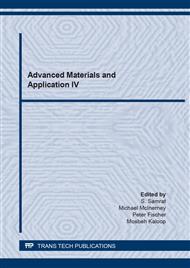p.111
p.117
p.123
p.131
p.139
p.145
p.151
p.157
p.165
Strength of Polypropylene Fiber Reinforced Cement Mortar Composites with Variable Water/Cement Ratio
Abstract:
For cement mortars the reinforcement techniques by randomly distributed short fibers, contribute highly to their micro-cracking stabilization and to improvement of their flexibility and tensile strength. Among the wide different types of short fiber reinforcement that have been used in the past for mortars, those made of steel, polymers and natural fibers dominate the area. It is a common sense that the reinforcement of mortars by polypropylene fibers (PP) is considered a very efficient method for reducing their curing shrinkage and enhanced toughness and strength of un-reinforced cemented material. In this study, PP fiber reinforced mortars were prepared with specific composition but with variable water to cement (W/C) ratio and appropriate superplasticizer amounts. For all mixtures their workability, air content and flexural and compressive strengths were measured. In conclusion it can be stated that even though W/C ratio of mortars is varied considerably, and also do their mechanical response, it is possible by appropriate mixture designing, for all studied compositions to produce suitable mortars that can be used successfully in a wide range of demands and applications, achieving high mortar strengths and ideal workability behavior.
Info:
Periodical:
Pages:
157-163
Citation:
Online since:
August 2021
Price:
Сopyright:
© 2021 Trans Tech Publications Ltd. All Rights Reserved
Share:
Citation:


